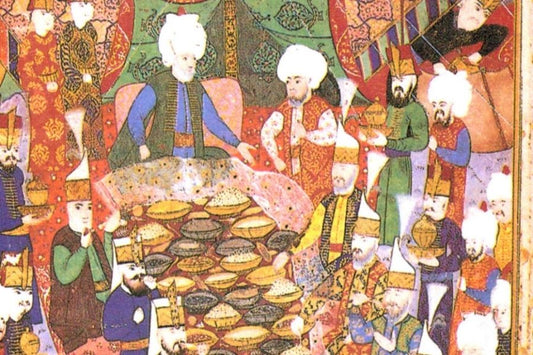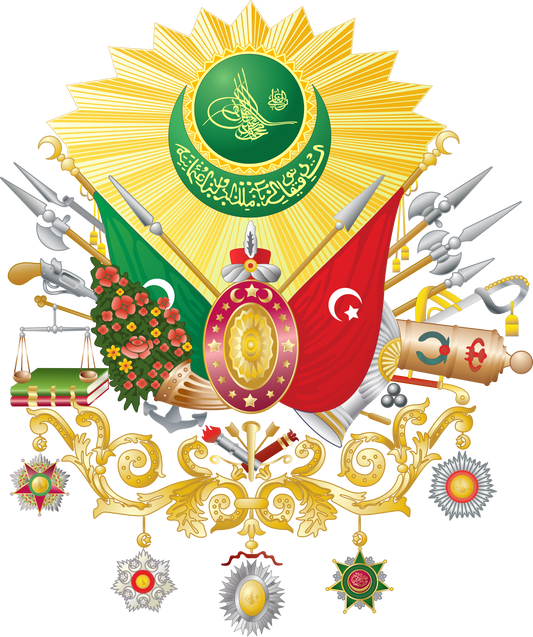The Hatayi pattern, a striking detail in Ottoman art, is a motif that stands out for both its elegance and meaningful design. Influenced by Chinese art and blended with Ottoman aesthetics, this motif holds a significant place in many areas, including tiles, ceramics, fabrics, and carpets. Inspired by nature, the flower and leaf figures, stylized, reflected the imagination of artists and evolved over time into a distinctive Ottoman style. In this article, we will explore every detail of Hatayi motifs, from their history to their applications.
The Origin of Hatayi Motifs: A Journey from Chinese Art to the Ottoman Empire
Artists, not simply imitating nature, created motifs of varying types and beauty by adding their own interpretations to floral depictions. In Ottoman art, a group of floral motifs created by stylized drawings of flowers and leaves from the top and side was called the "Hatayi pattern." Inspired by Chinese art, there are differing opinions on the origin of this motif. Some believe it was learned by an artist who traveled from Herat to China; others believe it was inspired by the lotus, peony, and pomegranate. However, a common consensus is that the motif takes its name from "Hıtay," a region of China.
Timurid Influence and the First Hatayi Examples in Ottoman Art
In early Ottoman art, stylized flowers from the Hatayi group were widely used, following Timurid influence. Plain and simple designs of these motifs were featured in the tile decorations of the Bursa Yeşil Külliye (Green Complex) and the Edirne Muradiye Mosque in the 15th century. The influence of the Herat style, which developed during the reign of the Timurid statesman Baysungur, is evident in the early examples. During this period, Ottoman motifs acquired a distinctive character, reflecting their own aesthetic sensibilities.
Baba Nakkaş and the Hatayi Style of the Period of Mehmed the Conqueror
During the reign of Mehmed the Conqueror, Hatayi motifs gained a new interpretation in manuscripts, tiles, and ceramics crafted in the Baba Nakkaş style. These motifs were enriched in a uniquely Ottoman style with petals curling in on themselves and interspersed with smaller leaves, rumi motifs, and cloud motifs. In Baba Nakkaş's works, these patterns created a unity that was both elegant and aesthetic, bringing a new breath to Ottoman art.
Şahkulu and Saz Style: Complex Versions of Hatayi Patterns
Şahkulu, who hailed from Tabriz and worked as a miniaturist in the Ottoman court in the first half of the 16th century, reshaped Hatayi motifs within the Saz style. During this period, extremely complex versions of Hatayi motifs were developed, and long, dagger-like curved leaves became a characteristic feature of this style. Şahkulu's works stand among the most magnificent and detailed examples of motifs in the classical era of Ottoman art.
Hatayi Pattern in the Ottoman Classical Era: Fine and Elegant Designs
Hatayi motifs, which left their mark on the classical era of Ottoman art, are designed in a much smaller and simpler style than other forms in illumination, halakar, and bookbinding. They are depicted as simple leaves with intertwined petals between slender, spiraling branches. In tile and silk fabric designs, large-scale Hatayi motifs stand out with their layered leaves and rich colors. The motif's involute leaves add dimensionality and elegance to the designs.
Areas of Use of Hatayi Motifs: Tiles, Fabrics, Carpets and More
For centuries, Hatayi motifs have found widespread use in Ottoman art. A seemingly endless variety of Hatayi motifs, reflecting the imagination of the artists, have been seen in tile decoration, ceramics, fabrics, carpets, and metalwork. Symmetry, buds, leaves, and stems are among the elements that complete the composition. These details reflect the elegant and meaningful aesthetics of Ottoman motifs.
Discover Ottoman Elegance with the Hatayi Pattern
The Hatayi pattern is one of the most striking motifs reflecting the elegance and creative power of Ottoman art. Used for centuries in diverse areas such as tiles, ceramics, silk fabrics, and carpets, this motif continues to inspire today with its artistic and aesthetic value. The details of this magnificent pattern, which extends from Chinese art to the Ottoman era, combined with the unique interpretations of Ottoman artists, have created an unforgettable legacy. If you would like to add this elegance to your life with tiles featuring the Hatayi pattern, you can explore our products by clicking here .




